








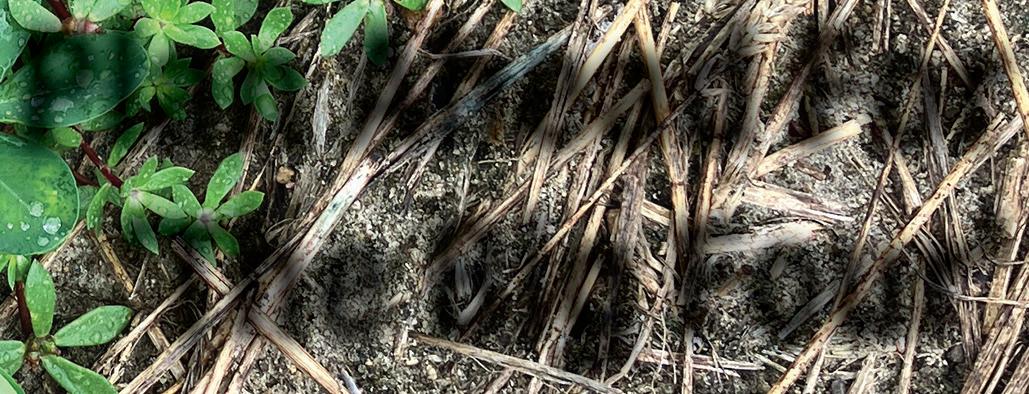
Plan Ahead For ‘The Big Four’ ONE GROWER PUBLISHING, LLC THE PEANUT PRODUCER'SMARKETING & PRODUCTION MAGAZINE www.peanutgrower.com PEANUT GROWER The APRIL 2024 Top 5 Common Weed Management Problems In The Zone: Calcium Q &A
Since 2001, the has invested more than �36 million National Peanut Board in food allergy research, outreach and education. Learn more at NationalPeanutBoard.org









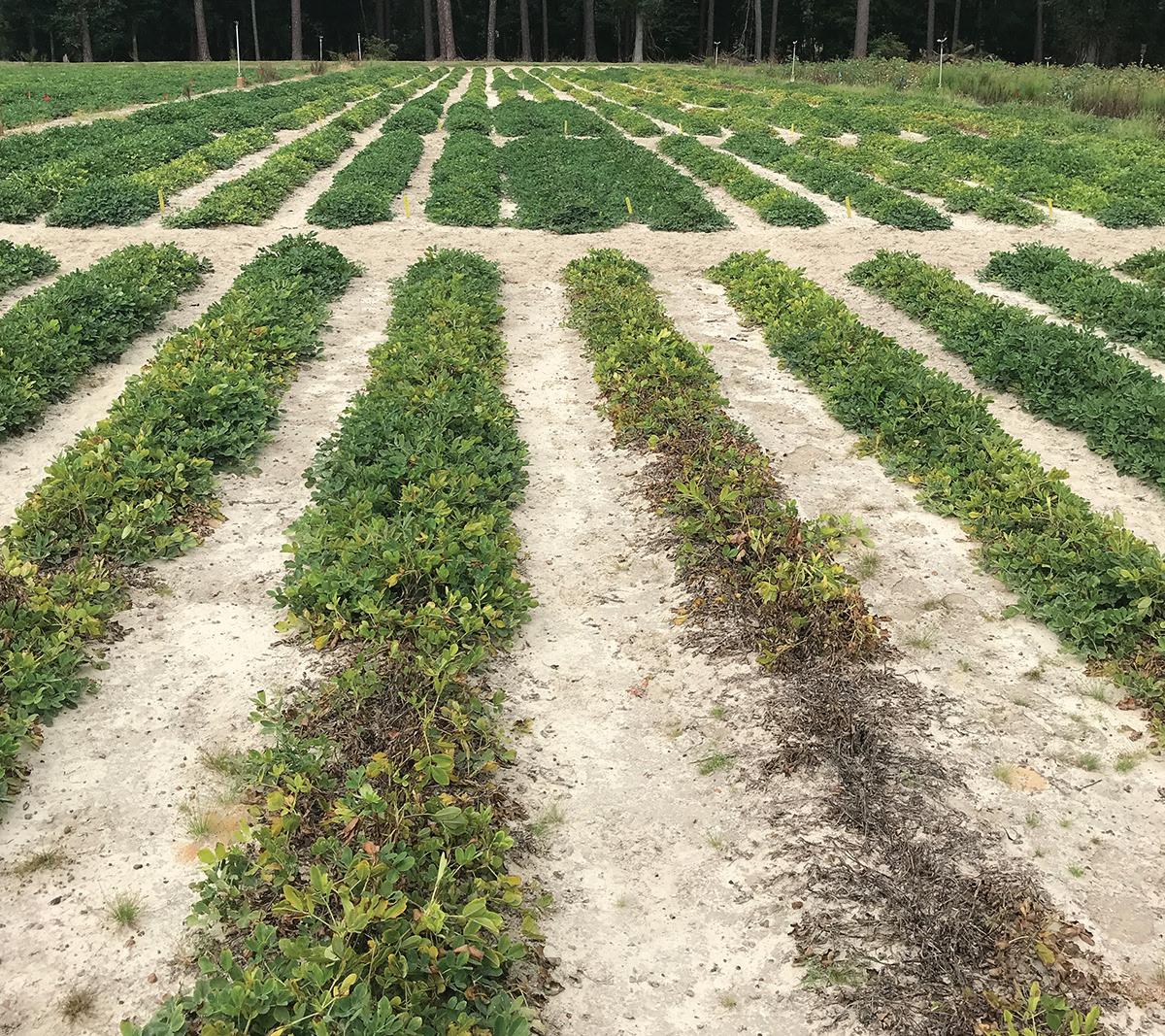



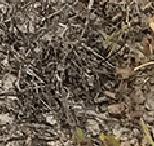

10 4 Editor’s Note Check in with yourself 5 News Briefs Value of 2023 crop up 7.5% 8 Market Watch Export market benefits from European demand Volume 36 • Number 4 Cover photo by Amanda Huber Plan Ahead For ‘The Big Four’ ONE GROWER THE PEANUT PRODUCER'SMARKETING & PRODUCTION MAGAZINE www.peanutgrower.com PEANUT GROWER The APRIL 2024 Top 5 Common Weed Management Problems In The Zone: Calcium Q&A Features 10 Plan Ahead For The Big Four ree of these critical problems can only be tackled at planting. 12 Top 5 Common Weed Problems Time and awareness can help prevent many problems with weed management. 16 In The Zone Q & A about calcium, a critical element. 18 New Ag Research Facility Underway State-of-the-art building and laboratories will benefit peanut breeding efforts. Departments 20 Peanut Pointers Varieties have their pros and cons APRIL 2024 Stay Connected Sign up for the monthly e-newsletter at peanutgrower.com to have exclusive industry news and content delivered directly to your inbox. www.peanutgrower.com PeanutGrower @PeanutGrower @ThePeanutGrower APRIL 2024 • THE PEANUT GROWER / 3 | @PEANUTGROWER
EDITORIAL/PRODUCTION
Editor Amanda Huber ahuber@onegrower.com
Copy Editor
Cassidy Nemec cnemec@onegrower.com
Art Director Ashley Kumpe
Digital Content Manager Katie Guthrie
ADMINISTRATION
Publisher/Vice President
Lia Guthrie (901) 497-3689 lguthrie@onegrower.com
Associate Publisher/Editor-In-Chief Carroll Smith (901) 326-4443
Associate Publisher/Sales Scott Emerson (386) 462-1532 semerson@onegrower.com
Audience Services
Kate Thomas (847) 559-7514
Production Manager David Boyd dboyd@onegrower.com
For subscription changes or change of address, call (847) 559-7578 or email peanutgrower@omeda.com
EDITORIAL ADVISORY BOARD
Scott Monfort
Extension Agronomist
University of Georgia
Dell Cotton
Peanut Growers Cooperative Marketing Assn., Franklin, VA
Kris Balkcom
Agri-Program Associate
Auburn University
Dan Anco
Extension Peanut Specialist
Clemson University
Emi Kimura Extension Agronomist Texas A&M University David Jordan Extension Agronomist North Carolina State University Glen Harris Extension Agronomist University of Georgia Jason Ferrell Extension Weed Specialist University of Florida
Mike Lamensdorf PRESIDENT/TREASURER
Lia Guthrie PUBLISHER/VICE PRESIDENT
The Peanut Grower (ISSN 1042-9379) is an agribusiness magazine for U.S. peanut producers. Published in eight monthly issues, January through July and November. Annual subscriptions are $40.00. Single Copy price is $5.00. Annual overseas subscriptions are $70.00, including Canada/Mexico. Periodicals postage paid at at Memphis, Tennessee, and at additional mailing o ices. Copyright © 2024 One Grower Publishing, LLC, all rights reserved except where otherwise noted. The Peanut Grower ® is a registered trademark, which reserves all rights granted by the U.S. Patent and Trademark O ice in association with the registration. POSTMASTER: SEND ADDRESS CHANGES TO OMEDA COMMUNICATIONS, CUSTOMER SERVICE DEPARTMENT, P.O. BOX 1388, NORTHBROOK, IL 60065-1388. All statements, including product claims, are those of the person or organization making the statement or claim. The publisher does not adopt any such statement or claim as its own, and any such statement or claim does not necessarily reflect the opinion of the publisher. Printed in the USA.
One Grower Publishing, LLC, also publishes Cotton Farming, Rice Farming, Soybean South and Corn South
One Grower Publishing, LLC
875 W. Poplar Ave., Suite 23, Box 305 Collierville, TN 38017


Editor’s Note
Check In With Yourself
Once a month, I get an enewsletter with the Purdue University/CME Group Ag Economy Barometer outlining current farmer sentiment. Although from the Midwest, the concerns are pretty universal throughout agriculture.
This month revealed a modest increase in farmer sentiment. When asked about their farm operations, the top concern cited by 34% of respondents was “high input costs,” closely followed by “lower crop/livestock prices,” by 28% of respondents.
The mental health challenges farming communities face is something that is being brought to the forefront. In March, the University of Georgia held their third Farm Stress Summit to address mental health challenges among Georgia farming communities.
 Amanda Huber Editor, e Peanut Grower
Amanda Huber Editor, e Peanut Grower
Mark McCann, assistant dean for UGA Cooperative Extension and Agriculture and Natural Resources program leader, says, “Speakers at the recent Georgia Ag Forecast program in Tifton shared a challenging outlook for 2024. A dimmer profit perspective translates into added stress for many farmers.”
Although this year’s summit has happened, resources from the past three years’ summits can be found online. Another resource is the Georgia Department of Agriculture’s Mental Health Resources website found at www.agr.georgia.gov/ mental-health-resources, complete with a test to help you check in with yourself and follow the ABCs of Agricultural Wellness.
Keynote speaker for the 2023 Farm Stress Summit was Marshal Sewell, who also happens to go to my church. Growing up on a multi-generational fruit and vegetable farm in Florida, Marshal was a witness firsthand to what farm stress will do as he and his family had to cope with the suicide of his father. His ministry now has taken shape under the Mind Your Melon concept. I encourage you to visit MindYourMelon.org, read Marshal’s blog or tune into Marshal and his wife Taylor’s podcast.
Marshal has studied farmers and what helps them manage all the stresses a little better. He says, “It is making the time to care for ourselves upfront…before having to take the time to repair ourselves once something goes awry.”
You will do maintenance on tractors, planters, diggers and combines. Will you do maintenance on yourself? How about you check in with yourself and Mind Your Melon? Please.
4 / THE PEANUT GROWER • APRIL 2024 PEANUTGROWER.COM
ONE GROWER PUBLISHING, LLC


News Briefs
Sustainability Roundtable
Representatives from the manufacturing, shelling and grower segments of the peanut industry came together recently for a forum on sustainability. Highlighted were the efforts underway by the industry to capture metrics on sustainable practices. Hosted by the American Peanut Council, leaders from each sector discussed marketplace demands and shared how growers are rising to meet these expectations.
As consumer demand continues to grow for measurable sustainable food production practices, so does pressure from manufacturers, retailers and international trading partners. According to a 2023 report from global consulting firm Kearney, 42% of U.S. consumers say they consider sustainable food practices when making purchasing decisions.
To meet these expectations, the American Peanut Council is spearheading an industry-wide effort to benchmark growers’ sustainable practices. The Sustainable U.S. Peanuts Initiative is supporting America’s 7,000-plus peanut farmers with metrics on the most efficient use of on-farm resources, as well as encouraging farm operation sustainability practices that will help lead to increased demand for peanuts and set the stage for long-term economic viability for growers.
“We are constantly aware of our sustainability,” says Dan Ward, a seventh-generation grower who is president of the North Carolina Peanut Growers Association and chair of APC’s Sustainability Committee. “From grid sampling for the best use of fertilizer applications to staying on top of research of new varieties that allow fewer trips across the field, we are continually striving to limit our footprint. Not only is this important for the environment, but we want our farms to be financially sustainable for the next generation.”
Michael Campagna, vice president of Quality, Food Safety and Regulatory at John B. Sanfilippo & Son, whose
brands include Fisher, Squirrel Brand and Orchard Valley Harvest, as well as private label, says, “Having the statistical confidence provided by Sustainable U.S. Peanuts will, in the long run, help us all sell more peanuts and peanut butter. The initiative is creating those stories for the farmers who want to be more efficient, provide more yield and show to consumers peanuts’ positive sustainability story.”
To learn more about the Sustainable U.S. Peanuts Initiative, visit sustainableuspeanuts.org
2023 Crop Value
According to the U.S. Department of Agriculture’s National Agricultural Statistics Service, the price of peanuts averaged 27 cents per pound, or $540 per ton last season, 0.7% higher than 2022. The value of the 2023 peanut crop at farm level was $1.6 billion, a 7.5% increase from 2022. Harvested peanut acres were increased 14%.
The highest average price was paid in Texas at $924 per ton followed by New Mexico at $816 per ton. The lowest average price was paid in Alabama at $498 per ton. About 49% of the revenue from peanuts was produced in Georgia. Ranking second with revenue is Texas at 13.4%, followed by North Carolina at 8.9% and Florida at 8.5%.
NPB Referendum Dates Set
USDA announced recently that it will conduct a referendum April 8-19, 2024, for eligible U.S. producers of peanuts to decide whether to continue their research and promotion program. Persons who are engaged in the production and sale of peanuts at the time of the referendum and during the representative period of Jan. 1 – Dec. 31, 2022, are eligible to vote. The order will continue if it is favored by a majority of producers voting in the referendum.
USDA’s Agricultural Marketing Service will conduct the referendum by
In Brief
• Roundtable discussion: 42% of consumers consider sustainability in purchasing.
• The value of the 2023 peanut crop increased 7.5% over the previous year.
• Check for your NPB referendum ballot; return postmarked by April 19.
• Exports to Europe increase significantly, putting the continent ahead of China as the industry’s third-largest export market.
• Make plans to attend Peanut Congress, American Peanut Research and Education Society meetings.
• Georgia Ports Authority completes billion-dollar infrastructure improvements, plans billions more.
regular mail, express mail and electronic ballot. AMS staff will mail ballots and voting instructions to all known eligible U.S. peanut producers before the voting period. Completed ballots returned to AMS through regular mail must be postmarked by April 19, 2024, to be counted.
Ballots delivered to AMS via express mail or electronic ballot must show proof of delivery no later than 11:59 p.m. EST April 19, 2024, to be counted. Any eligible U.S. peanut producer who does not receive a ballot by April 13, 2024, should contact referendum agent Victoria M. Carpenter, marketing specialist, at (202) 400-1865 or (202) 720-8085, or by email at VictoriaM.Carpenter@usda. gov . A notice of the referendum was published in the Federal Register Feb. 20, 2024. For more information, visit the NPB website.
APRIL 2024 • THE PEANUT GROWER / 5 | @PEANUTGROWER


News Briefs
APRES 56th Annual Meeting
Registration for the 56th annual meeting of the American Peanut Research and Education Society is now open. This three-day event brings together original research, Extension insights and industry updates and blends together business and social settings. Attendees engage in committees, workshops, training sessions and shared downtime, fostering opportunities for brainstorming, strategizing, education, learning and relationship building.
This year’s APRES meeting will be held at the Omni Oklahoma City, Oklahoma City, Oklahoma. The city is an exceptional meeting destination offering rich cultural experiences with modern amenities. From the vibrant Bricktown Entertainment District to the historic National Cowboy &
Record-High Export Values Achieved In 2023
The American Peanut Council recently reported that total U.S. peanut exports for 2023 reached a record-high value of $889.5 million, a 24% increase from the previous year. U.S. peanut export volumes for 2023 reached 562,927 metric tons, up 18% from 2022.
Attributed to a sharp rise in demand as the main factor behind the increase, APC said exports to Europe, excluding the United Kingdom, rose 148% by value and 117% by volume to reach $182 million and 110,756 metric tons. At the same time, Europe’s overall share of exports by value doubled year-overyear, rising from 10% in 2022 to nearly 21% in 2023, surpassing China to become the peanut industry’s third-largest export market.
“The American Peanut Council has been working diligently for many years to promote the benefits of U.S. peanuts and peanut products in Europe,” says APC senior director of international programs Peter Vlazakis. “We’re glad to see European traders recognizing availability and versatility, but we realize competition in this lucrative market remains high.”
Mexico remained the top export destination for U.S. peanuts in 2023 with total shipments reaching a new high of $230 million and 155,532 metric tons. This represented the third consecutive year that shipments to Mexico achieved

Western Heritage Museum, Oklahoma City offers a unique tapestry of history, arts and outdoor activities.
For more information, visit APRESinc.com
record highs. Total exports to Mexico increased 8% by value and 4% by volume as compared to the previous year.
“Peanuts play a significant role in the Mexican culture,” says Vlazakis. “From holiday celebrations to everyday street food and popular snacks, U.S. peanuts can be found throughout the country.
“On the other hand, our second-largest export market, Canada, primarily uses U.S. peanuts for peanut butter, which is hugely popular for Canadian consumers,” he says.
Canada’s 2023 shipments totaled $218 million and 128,319 metric tons.

Make Plans For USA Peanut Congress
Make plans now to attend the 28th annual USA Peanut Congress, jointly hosted by the American Peanut Council and the American Peanut Shellers Association.
This year’s event will be at The RitzCarlton, Amelia Island, Florida. A block of rooms is being held for conference guests at a special group rate. This year’s Congress will be June 10-13.
Take advantage of early bird registration
rates available to members until May 6. Visit www.peanut-shellers.org for more information on USA Peanut Congress.
Georgia Port Of Savannah Keeps On Growing
Jamie McCurry, chief administration officer for the Georgia Ports Authority, recently spoke to members of the National Peanut Buying Points Association about their latest expansion to bolster their infrastructure capacity.
In 2023, GPA put the finishing touches on its $220 million Mason Mega Rail project, providing 24 miles of on-terminal track, he said.
Additionally, GPA board chairman Kent Fountain said, “Our goal is to ensure GPA customers have the necessary port infrastructure capacity and supply chain connectivity to support their long-term growth ambitions in world markets. This is what drives our port master plan investments.” Besides completing $1.9 billion in infrastructure improvements, GPA anticipates investing $4.2 billion in the next 10 years.
In January, GPA handled 428,000 20-foot equivalent container units, an increase of 6,300 containers, or 1.5% compared to the same month last year. Cargo moved by rail at the Port of Savannah reached 47,132 containers in January, an increase of 10,000 boxes, or 27%. Peanuts make up only 2% of the container freight loading in Savannah.
6 / THE PEANUT GROWER • APRIL 2024 PEANUTGROWER.COM


News Briefs
Xolair
Becomes First Food Allergy
Medication Approved by FDA
On Feb. 16, 2024, the Food and Drug Administration approved Xolair (omalizumab) to be used for reducing allergic reactions to multiple foods after accidental exposure.
While not a cure for food allergy, Xolair is currently the first and only FDAapproved medication to reduce the severity of IgE-mediated allergic reactions in certain adults and children ages one year or older with one or more food allergies. Xolair is a monoclonal anti-IgE antibody injection, which is a treatment made of one type of antibody that helps reduce the activity of the specific protein called IgE involved in allergic reactions. Prior to its approval for reducing food allergy reactions, Xolair was used for certain patients with moderate to severe persistent allergic asthma, chronic spontaneous urticaria and chronic rhinosinusitis.

“The National Peanut Board is proud to have supported research that improved the understanding of this treatment for peanut and other food allergies,” says NPB President and CEO Ryan Lepicier. “Since 2001, America’s peanut farmers have been committed to being part of the solution for peanut allergies. This FDA approval provides another option for food-allergic individuals and their families to improve their quality of life with less fear of life-threatening reactions.”
The efficacy of Xolair for reducing allergic reactions in food-allergic adults and children was studied in the Omalizumab as Monotherapy and as Adjunct Therapy to Multi-Allergen
Oral
Immunotherapy in Food Allergic Children and Adults (OUtMATCH) trial. The primary outcome of the study was for participants to be able to tolerate 600 mg of peanut protein. At the food challenge stage of the trial, 67% of the subjects who received Xolair were able to tolerate eating a 600 mg dose of peanut protein, approximately four peanuts, without moderate to severe side effects compared to placebo (7%), with decreasing effectiveness at higher doses (up to 4000 mg, or equivalence to 25 peanuts).
Patients on Xolair are still recommended to avoid foods that they are allergic to, and under guidance of an allergist may choose other treatment options for management of their allergies. This medication also is not intended for immediate emergency treatment of allergic reactions, including anaphylaxis. Xolair provides a new opportunity for individuals with food allergies to help prevent severe allergic reactions in the event of accidental exposure.






















































































































APRIL 2024 • THE PEANUT GROWER / 7 | @PEANUTGROWER
© 2024 SePRO Ag, LLC. Brake is a registered trade name of SePRO Ag, LLC. Always read and follow all label directions. Q: Can the best pigweed preemergence herbicide also be the foundation of your grass & broadleaf program? A: OF COURSE IT CAN! Contact Our Customer Experience Team Now registered for use in peanut! Brake® herbicide has proven itself in cotton and now peanut, with its excellent goosegrass & pigweed control.


Market Watch
Export Market Benefits From Increase In European Demand
Peanut producers roll into 2024 with lower commodity prices and higher inflation. The U.S. Department of Agriculture predicts that farm income will drop 25% from last year, news that took center stage at their recent Agricultural Outlook Forum. The government agency forecasted season-average corn and soybean prices of $4.40 and $11.20 per bushel, respectively.
Cotton producers intend to plant 9.8 million cotton acres this spring, down 3.7% from 2023, according to the National Cotton Council. The NCC says fewer cotton acres for 2024 are a result of weak demand and higher input costs putting pressure on profitability.
For peanuts, a survey of growers found that peanut acres will increase 5.4% to 1,731,000 acres. Georgia peanut producers are expected to plant 820,000 acres, up from 770,000 acres this past year, for a 6.5% increase. Other growing areas, both new and old, all show increases in peanut acreage: Arkansas +17.6%, Alabama +6.9%, Florida +6.5% and Mississippi +11%. The USDA National Agricultural Statistics Service’s Prospective Plantings Report will be released March 28.
Final 2023 Numbers
Looking back, the peanut market remained strong in 2023, but higher input costs persisted as a major challenge. Contracts were largely in the range of $500 to $550 for runner peanuts for a second consecutive year. In the 2023–2024 marketing year, there was a 14% increase in planted peanut acres nationwide, to 1.65 million acres.
U.S. peanut yields were projected to average 3,742 pounds per acre, well below the 10-year average of 3,942 pounds per acre. The national peanut

NATIONAL
Runners - $425.29; Spanish - $413.12; Valencia and Virginias - $431.71
yield would be the lowest since 2016. In Georgia, peanut yields are expected to be down 3% from the previous year at 4,100 pounds per acre, also the lowest since 2016. Overall, U.S. peanut production increased by 7% to 2.9 million tons.
USDA NASS says the price of peanuts averaged $0.270 per pound ($540 ton) last season, 0.7% higher than 2022. The value of the 2023 peanut crop at farm level is $1.6 billion, a 7.5% increase from 2022. The average price was higher than the reference price of $535 per ton eliminating any Price Loss Coverage program payment.
How Is 2024 Shaping Up?
In the Southeast, buying points report shellers are offering a contract for runner-type peanuts at $550 per ton for high-oleic varieties and $525 per ton for regular-oleic peanuts. Tonnage is limited for each buying point. Additional bonuses, such as $25 per ton for irrigation, are being offered in some areas. Those shellers who are not buying high-oleic type cultivars are matching the $525 per ton for regular-oleic varieties.
In the Virginia-Carolina region, buy-
ing points report contracts are being offered at $525 per ton for runner-type peanuts, $550 per ton for high-oleic peanuts and $545 per ton for Virginia-type varieties.
The near-term market remains very firm. It’s difficult to get offers, and prices remain in high 60 cents per pound to 70s depending on the grade and specifications. New crop buyers are convinced there will be more peanuts planted in ’24, so they are looking for offers in the mid-50 cents per pound.
Domestic Markets
What about the U.S. market? Rawshelled peanut usage is down 1.56% for the six-month period of August through January in primary products. Peanut butter shows an increase during the same period of 1%. Peanut candy took a fall in January; however, usage is down only 1.2% for the six months. Snacks were down 11% for the year. There were no deliveries under the Government Domestic Feeding and Child Nutrition Programs for January. Deliveries for the year totaled 10.3 million pounds, 40% more than the previous year.
8 / THE PEANUT GROWER • APRIL 2024 PEANUTGROWER.COM
J. Tyron Spearman Contributing Editor, e Peanut Grower
Leading Marketing Indicators (March 7, 2024) 2023 Est. Acreage (+14%) .................................................1,574,000 acres 2023 Est. Production (3,742 lbs/A) ....................................2,945,010 tons 2023 Market Loan ...............................................................2,340,159 tons 2023-24 Remaining In Loan (3-5-24) ..................................1,722,165 tons 2023 -24 Domestic Usage (6 Mo.) ................................................ -1.56 % 2023 Exports (Jan –Dec) (12 Mo.) ............................................... + 18.0%
POSTED PRICE (per ton)


Market Watch

Export Demand
The American Peanut Council reports that total U.S. peanut exports for 2023 reached a record-high value of $889.5 million, a 24% increase from the previous year. U.S. peanut export volume for 2023 reached 562,927 metric tons, up 18% from 2022.
A sharp increase in demand from Europe is the main factor behind the increase. The APC says exports to Europe, not including the United Kingdom, rose 148% by value and 117% by volume to reach $182 million and 110,756 metric tons. At the same time, Europe’s overall share of exports by value doubled yearover-year, rising from 10% in 2022 to nearly 21% in 2023, surpassing China to become the peanut industry’s third-largest export market.
Mexico remained the top export destination for U.S. peanuts in 2023 with
total shipments reaching a new high of $230 million and 155,532 metric tons. This represents the third consecutive year that shipments to Mexico achieved a new record. Total exports to Mexico increased 8% by value and 4% by volume as compared to the previous year.
Canada retained the title as the U.S. peanut industry’s second-largest export market with 2023 shipments totaling $218 million and 128,319 metric tons, up 5% by value but down 0.2% by volume. Canadians consume most of the product in peanut butter.
Peanut exports to China increased 24% by value and 21% by volume to reach $98.5 million and 100,843 metric tons. China continues to be a big market for U.S. inshell peanuts in particular, which are typically crushed for oil but can also be shelled and sold to snack and confectionary manufacturers.
Still Waiting On A Farm Bill
What about the peanut program and Farm Bill? With no PLC payment, the peanut program is of less value to the farmer. The $355 per-ton loan value allows some financial guarantee along with storage and handling assistance. Producers are facing opposition to increasing the reference price by some legislators. The U.S. Peanut Federation continues to work toward this effort in Washington D.C., while also trying to keep peanuts in their section of the Farm Bill.
Watch for market offers. International buyers and domestic manufacturers are willing to pay a reasonable price that would hopefully be a profitable enough price to the farmer. They want and need your quality peanuts. Check with your buying point and sheller and stay abreast of industry issues in the works to keep you profitable and sustainable.
APRIL 2024 • THE PEANUT GROWER / 9 | @PEANUTGROWER
Plan Ahead For The Big Four
Three of these critical problems can only be tackled at planting.
By Amanda Huber
One of the greatest mystery novelist’s later works in her series of Hercule Poirot stories is The Big Four. In this story, Agatha Christie has Poirot looking for four criminal masterminds of an international crime syndicate. Solving the mystery involves faking his own death to draw in The Big Four. As always, the criminals are no match for Poirot’s “little grey cells,” and he dispatches them into the underworld obscurity.
According to University of Georgia Extension plant pathologist Bob Kemerait, the peanut crop has its own Big Four: Tomato Spotted Wilt Virus, seedling disease, nematodes and the fungal diseases leaf spot and white mold. In production meetings this spring, Kemerait referred to these as the four horsemen of the apocalypse, a Biblical reference to the harbingers of the end times. Any way you look at it, these four are critical threats to the peanut crop with the potential to kill the plant quickly or rob yields in the end. The only time to combat three of these problems is at planting, something that can be overlooked at the time.
Get Ahead By Looking Back
The first and most primary way of decreasing disease and nematode potential is with crop rotation. By increasing the interval between peanut crops in a field and planting crops that are not susceptible to the same diseases, growers can reduce the impact of diseases and nematodes and also reduce the reliance on chemical control methods.
The UGA recommendation is that peanuts are planted not more than once in a field over a three-year period. Growers should have a minimum of two years between each peanut crop. Short rotations lead to increased damage from disease and nematodes and increased yield losses.
Beyond rotation, Kemerait says growers should not focus too far ahead at planting. “I think we tend to white mold or leaf spot and get ahead of ourselves,” he says. “There is a lot that happens before then, and if you miss that opportunity, there is no going back.”
Looking ahead will overshadow the fact that this season started the previous year.
“When did the 2024 peanut season start? The answer is it already did,” Kemerait says. “The 2024 peanut season started with hot and dry conditions in 2023, which predisposes the crop to infection by Aspergillus fungi, A. flavus and A. niger. The fungus is already there.”
“The 2024 peanut season started with hot and dry conditions in 2023, which predisposes the crop to infection by Aspergillus fungi, A. flavus and A. niger. The fungus is already there.”
BOB KEMERAIT UGA Extension plant pathologist
Other seedling diseases, such as Aspergillus crown rot and those caused by Rhizoctonia solani, are also a possibility, especially if those diseases have been a problem in that field before.
A fungicide seed-treatment, such as Rancona VPD, Rancona VPL or Trebuset, are seed treatments to help ward off these seedling diseases and get the crop off to a good start.
Spotted Wilt Still A Threat
Tomato spotted wilt is another disease that can only be reduced with decisions made at or before planting. Losses to TSWV in 2023 are estimated at around 5%, although it was much greater in some fields, but this is down from 7% in 2022. The factors affecting TSWV have long been identified but continue to be improved upon in Peanut Rx.
“Key considerations are planting date, variety selection and choice of at-plant insecticide,” Kemerait says. “Updates for 2024 include new varieties and point adjustments, as well as an update on Classic herbicide by UGA Extension weed specialist Eric Prostko.”
Specifically, growers can reduce their risk to losses from TSWV by planting resistant varieties. Newer varieties offer more resistance to TSWV than Georgia-06G, and growers should consider planting additional varieties on a few acres as a personal on-farm trial. Next, growers can further reduce their risk planting after May 10. Seeding rate, tillage, single rows versus double-rows, choice of at-plant insecticide and use of Classic herbicide are also points to consider. While it is difficult to follow all the management tactics outlined in Peanut Rx, growers can select the combination of a few that best fits their operation and offers some TSWV protection. All these decisions need to be made before planting.
“Once the furrow is closed, the die is cast for management of
10 / THE PEANUT GROWER • APRIL 2024 PEANUTGROWER.COM

‘The Big Four’ Threat To Peanuts

TSWV,” Kemerait says. “If you don’t do what you can before closing the furrow, you might regret it the rest of the season.”
In The Furrow
Kemerait says if you are trying to do everything you can to combat diseases and nematodes, don’t forget the in-furrow fungicides. Each have their own strengths.
As for options, Azoxystrobin is inexpensive and effective against some important fungal pathogens, especially Rhizoctonia. It is less effective against Aspergillus crown rot. Likewise, Abound or Quadris will enhance stands, improve vigor and is also good on Rhizoctonia but not Aspergillus crown rot. Proline offers some stand and vigor benefits and has activity against early season white mold and Cylindrocladium black rot, another disease that has no curative fungicides for in-season use. Velum in-furrow is also an option for the suppression of nematodes, Aspergillus crown rot, early and late leaf spot and white mold.
Other options for nematodes include: Telone II, AgLogic, Velum Total, Propulse, Vydate CLV and Return XL.
Kemerait says not all fields need an in-furrow fungicide at planting, but it is extra insurance to getting the crop off to a good start.
“Growers who plant high-quality seed, have a good rotation system and are careful about planting dates and conditions, may not need an in-furrow fungicide,” he says.
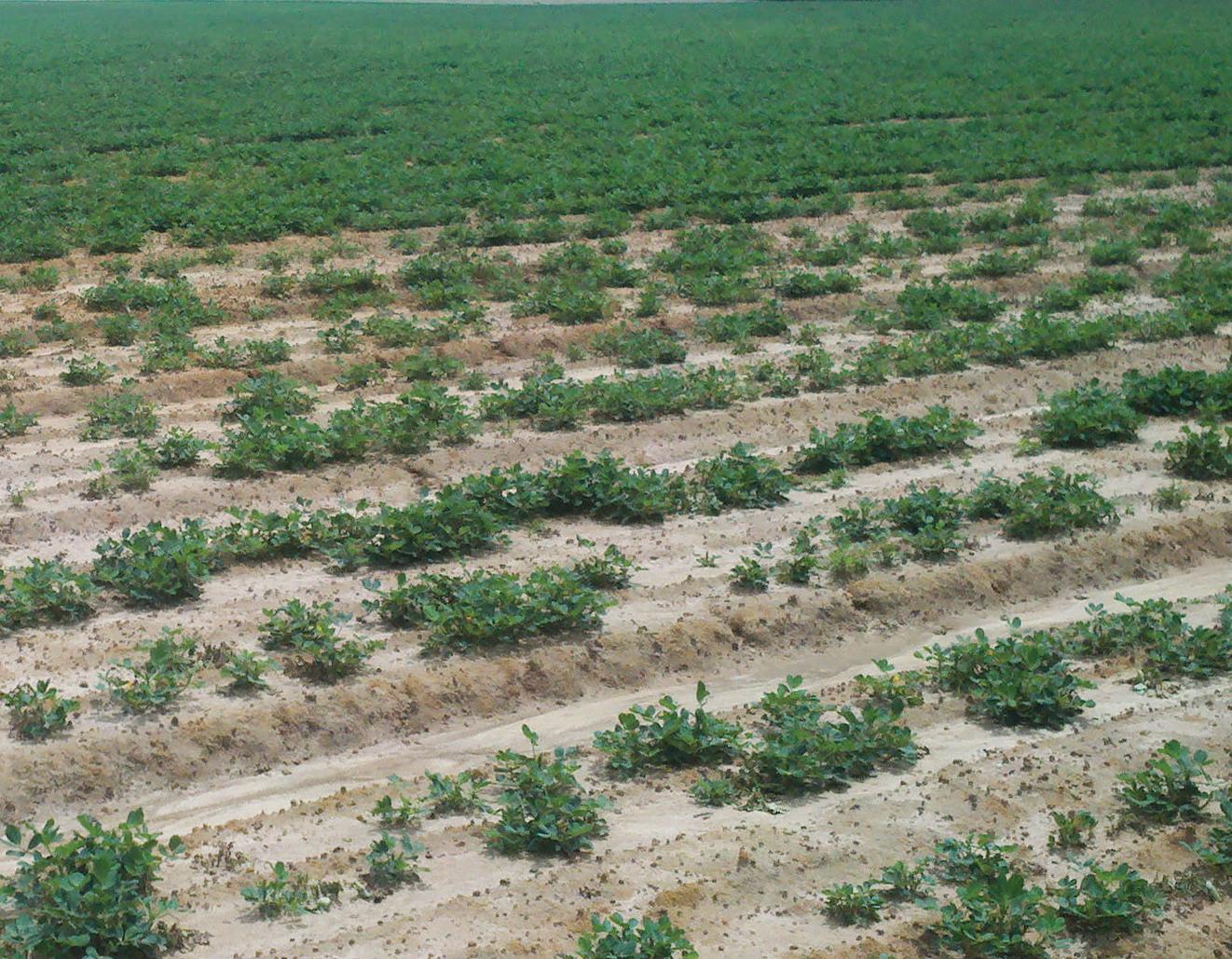

Fungal Disease
Weather conditions will dictate the type and severity of fungal disease in the coming season. In 2023, white mold was generally more severe than in 2022 because of the hotter conditions. Leaf spot is something growers can expect every year, with some years being more severe than others.
“Factors that increase threat to leaf spot diseases include environmental conditions, which also affects grower’s ability to make timely fungicide applications,” Kemerait says. “To prevent losses to leaf spot, especially late leaf spot, it is imperative to a) stay on a timely, proven program, and b) select fungicides or mixtures of fungicides based upon threat of disease in the field, and c) continue appropriate management programs through the end of the season.”
He also says that with peanuts staying in the ground for more than 140 to 150 days, more attention needs to be given to protecting the crop from white mold even after the traditional “four-block- 60-to-104-days-after-planting” window ends.
There are many fungicides and tankmixes that can be used against both soilborne and foliar diseases throughout the season. This one of The Big Four has copious options. However, once the furrow is closed, growers can only watch what happens in their crop from the other three: TSWV, nematodes and seedling diseases. PG
APRIL 2024 • THE PEANUT GROWER / 11 | @PEANUTGROWER
Disease
Seedling
Fungal Disease
Tomato Spotted Wilt Virus
Nematodes
Top 5 Common Weed Problems
Time, thought and awareness can help prevent many problems with weed management.
By Amanda Huber
It was Marcus Tullious Cicero, a statesman, lawyer and philosopher whose principles led to the establishment of the Roman Empire, who possibly first wrote, “Man is his own worst enemy.” It has been so before, during and ever since that time. People are often the cause of many of their own problems. That could be why University of Georgia Extension weed specialist Eric Prostko focused his talks this spring on preventing self-inflicted weed management issues.
We all make mistakes, Prostko says, but putting a little more time, thought and awareness into some situations could prevent potential problems.
What Are The Problems?
Wondering if the problems faced by he and UGA Extension cotton weed specialist Stanley Culpepper last year were similar to those faced by other weed scientist colleagues, Prostko did an informal survey.
“I polled my colleagues across the Southeast from Virginia to Missouri and asked them to rank these five problems that are common for me on a scale of one to five,” Prostko says.
The most common problem for the 21 Extension weed scientists who responded was off-target movement, followed by sprayer tank contamination, mixing and jug errors, herbicide carryover look-a-likes, with true herbicide carryover as the least-common problem.
Prostko says these rankings were different than what he would put forward.
“My No. 1 was mixing and jug errors, followed by herbicide carryover look-a-likes,” he says. “Culpepper said herbicide carryover look-a-likes followed by sprayer contamination, probably owing to the different systems used in cotton.”
With off-target movement not in the top spot, Prostko says he feels pretty good about the job they’ve been doing in educating growers about drift scenarios.
Start On Time
More than anything, Prostko says getting into the field on a timely basis could solve many problems.
“I know many farmers have more and more acres to cover, and it’s hard to get into those fields on a timely basis. But that said, almost every time we spray a herbicide at the right time, it is going to work,” he says. “When you are timely, things are going to go well.”
Reduce Weed Management Errors:
• Be as timely as possible.
• Lower boom height, reduce speed to improve coverage.
• Throw away all empty pesticide jugs.
• Do not pour new chemicals into empty jugs for mixing.
• Look in the tank to be sure it is clean.
• Train employees to not make assumptions.
• Improve awareness of off-target movement, other problems.
• Put fields with broadleaf perennials into a crop other than peanuts first.
• Protect pesticide modes of action because new ones are not coming.
However, if you can’t be timely, coverage becomes more important.
Big, fancy sprayers are nice, he says, and it enables you to spray more, but are they perfect? Do we get the best coverage?
“Boom height and speed affects coverage,” he says. “I am 6 feet tall, and if your boom is that high, you are not getting good coverage, especially if you are also driving too fast.
“I’m not suggesting you drive 3 miles per hour, but if you are having problems getting good coverage and you are looking for ways to tweak how you spray, reduce that speed just a bit.”
Chuck Old Jugs
Going back to his No. 1 problem that is very preventable, Prostko says he wishes he could get all farmers to throw out any empty jugs laying around their shop.
“If you have an empty jug laying around, poke a hole in it and get rid of it. One of the main problems I see is contamination from reused containers. Something will get sprayed on peanuts that wasn’t supposed to because a chemical was put in an unlabeled container.
“Don’t put new chemicals into other jugs thinking you are going to remember what you did or will come back and label it later. Get rid of the jugs,” he says.
Practice Situational Awareness
Following closely with jug and mixing errors is simply situational awareness.
“As far as sprayer contamination and cleanout, look in the tank to make sure it’s clean. Don’t make assumptions, and don’t assume workers are taking care of it,” Prostko says.
12 / THE PEANUT GROWER • APRIL 2024 PEANUTGROWER.COM


Controlling Broadleaf Perennial Weeds
UGA Extension weed specialist Eric Prostko says no peanut herbicides work well on these types of weeds. Growers who have perennial weeds in their peanut fields might consider the following:
a) If perennial weeds are in small spots and growers are willing to sacrifice the peanuts in those spots, they can be spot treated with a high rate of glyphosate (i.e. Roundup PowerMax3 5.88SL at 44 ounces per acre or equivalent).
b) In the fall after harvest, allow perennial weeds to regrow then treat


fields with a high rate of glyphosate. This fall application of glyphosate must be applied at least two weeks before first frost. In the following spring, plant RR-field corn or Xtend soybeans/cotton and plan on using a postemergence combination of glyphosate + dicamba in those crops.
c) It will take multiple years of fall and spring applications of glyphosate to get perennial weeds under control.
d) Avoid planting peanuts in fields with known populations of perennial weeds.
“Many times, I go into the field and the farmer isn’t the one doing the spraying. You need to make sure folks that work for you follow these points as well. Some growers use separate sprayers for different crops such as peanut and cotton.”
This point follows closely with off-target movement in that being aware of wind speed and direction and being aware of other, neighboring fields that may be affected can help reduce problems.
Education on these points and knowing what various problems are likely to look like can help farmers diagnose a problem more quickly. Know what a wrong soil pH looks like versus nematode damage. Also be conscious of pesticide carryover look-a-likes, Prostko says.
“True herbicide carryover doesn’t happen as often as you might think,” he says. “If you follow the label, you will be very unlikely to have a problem with that.”
APRIL 2024 • THE PEANUT GROWER / 13 | @PEANUTGROWER
Heliotrope
Horsenettle, UF IFAS
Dogfennel, G. Hancock, Turner Co.
Maypop passionfl ower, UF IFAS


Sonalan HFP 4EC @32 oz/A
Valor EZ 4SC @ 3 oz/A
Strongarm 84WG @ 0.225 oz/A
Applied PRE (1 DAP)
Cadre 2AS @ 4 oz/A

Prowl H20 3.8SC @ 32 oz/A
Valor EZ 4SC @ 3 oz/A
Strongarm 84WG @ 0.225 oz/A
Applied PRE (1 DAP)
Cadre 2AS @ 4 oz/A
PE-12-22
May 31 34 DAP
2,4-DB 2SL @ 16 oz/A
Dual Magnum 7.62EC @ 16 oz/A
Applied POST (27 DAP)
2,4-DB 2SL @ 16 oz/A
Dual Magnum 7.62EC @ 16 oz/A
Applied POST (27 DAP)
Eric Prostko, UGA Extension weed specialist, says these weed control programs have worked for him for more than 20 years when starting clean in the field. He has not observed any differences between Prowl- or Sonalan-based programs. Additionally, if you do not like Dual Magnum, substitute Anthem Flex, Outlook, Warrant or Zidua. Substitutes for Cadre are Ultra Blazer or Cobra but lower your weed control expectations, especially if nutsedge and/or sicklepod are present.
The Challenge Of Perennial Weeds
Prostko says in 2023, perennial weeds were a significant problem.
“It’s impossible to control perennial broadleaf weeds in peanuts. We don’t have herbicides that can selectively control those weeds,” he says. “We can spray glyphosate, but we’ll take the peanuts out.
“When we plant peanut in fields where we’ve got dogfennel, horseweed, alligator weed or maypop passionflower, we are going to lose. You cannot kill those broadleaf perennial weeds with herbicides used in peanut,” Prostko says.
“If you are planting peanuts in a field that was pasture the previous year, consider putting something else there. Put Roundup Ready cotton or corn, at least get some Roundup in the system to knock down those perennial weeds, then come back with peanuts.”
Weather: The Uncontrollable Factor
Hot and dry conditions are usually growers’ biggest concern, Prostko says. Water is needed for herbicide activation, or more accurately, water is needed to move the preemergence herbicide from the top of the soil down into the top two inches or the zone where weed seed germinate.
“Moisture is also needed to help keep weeds active and growing,” he says. “Why are weeds harder to kill when it is hot and dry? Weeds know what’s going on. When it is dry, the weed leaf cuticle gets thicker, and it’s harder to get the herbicide into the leaf.”
Water can also be the problem at times by washing the herbicide off.

Protect Modes Of Action
One last point Prostko hopes farmers will keep in mind is that they need to be proactive in doing everything possible to protect the current pesticide modes of action because there are no new products in the pipeline.
“It takes 10 years to bring a product to the market,” he says. “I am actually going back and looking at some older products that may have potential in the field because there is no silver bullet coming in the future. That’s why we have got to be timely and do those things necessary to be successful when we do apply herbicides.” PG
14 / THE PEANUT GROWER • APRIL 2024 PEANUTGROWER.COM
NTC




Rollin’ River on the Room reservations at The Westin can be made online at https://book.passkey.com/e/50678321. For detailed conference and registration information, visit www.southernpeanutfarmers.org or scan the QR code above. The Westin Savannah Harbor Golf Resort & Spa Savannah, Georgia • SOUTHERN PEANUT GROWERS CONFERENCE july 17-19, 2024
In The Zone


Questions and answers about calcium, a critical element needed in the top 4 inches of soil.
As a legume, peanuts use the symbiotic relationship with bacteria added as an inoculant to fix atmospheric nitrogen into a form usable by the plant. The deep tap root is good at scavenging residual soil phosphorus and potassium. The next limiting element becomes calcium, which can lead to “pops” or no kernels and reduced yield. Researchers have also found that calcium is critical for good germination rates of peanuts saved for seed.
University of Georgia soil scientist Glen Harris answers some of the top calcium-related questions.
Q: What is the recommended calcium application rate?
A: The University of Georgia Extension recommends using gypsum when a pegging zone soil sample at 4 inches deep, taken soon after peanut emergence and when the results say you have either 1) less than 500 pounds of calcium per acre or 2) a calcium to potassium ratio of less than 3:1. If either of these criteria are not met, then it is recommended to apply 1,000 pounds per acre of gypsum at early bloom — approximately 30 to 45 days after planting.
Peanuts to be saved for seed should automatically receive 1,000 pounds per acre of gypsum at early bloom even if these levels are met.
Q: Can I base my gypsum or calcium needs on a fall soil sample?
A: This is better than nothing, but it is still better to base your calcium needs on a pegging zone soil sample. Soil samples taken in the fall were likely taken deeper than the pegging zone. Also, calcium can leach out of the pegging zone between a fall sample and early bloom and give you a false sense of security. Finally, if you take a fall soil sample and then deep turn before planting peanuts, you can very possibly turn up soil into the pegging zone that is low in calcium.
Q: Is liquid calcium a viable option to meet the crop’s needs?
A: It depends on what liquid calcium product you are talking about. For example, recent research has been conducted showing 10 gallons per acre of calcium chloride (or 20 gallons of calcium thiosulfate) through the pivot during peak pod fill (around 75 days after planting) can have some benefit. Again, this is not as good as a timely gypsum application but can be viewed as an ‘emergency” or “insurance” application. The calcium in both of these products is basically 100% soluble and, therefore, can be applied during peak pod fill. Also, calcium chloride could be the more affordable option but check on price and availability.
Liquid calcium applied through a center-pivot irrigation is considered a soil-applied application because the amount of water per acre is such that it runs off the leaves and into the soil to reach the developing pods.
16 / THE PEANUT GROWER • APRIL 2024 PEANUTGROWER.COM
Q: Is foliar-applied calcium a possible alternative?
A: Foliar products do not provide the rate of calcium needed and, even if they did, calcium does not translocate through the plant from the leaves to the pods. Calcium has to be absorbed with water directly through the walls of the developing pods in the pegging zone (top 4 inches or so of soil) not through the roots or any other part of the peanut plant.
Foliar calcium products with a recommendation of one quart per acre and sprayed at a total spray volume of 10 to 20 gallons per acre do not provide enough calcium.
Q: When is applying lime a better option than gypsum?
A: Lime should be applied before planting since the calcium in lime is not as soluble as the calcium in gypsum. If you are deep turning the soil, do this before applying lime so you don’t bury it. The calcium needs to be in the top 4 inches or the pegging zone. Lime should only be used when you either need a pH adjustment (below 6.0) or start around 6.0 so the lime will not raise the soil pH too high.
Q: What about a “liquid lime?” Has it been tested?
A: There is a product currently available called “Topflow” that has been field tested at a 12-gallons per acre rate, surface applied at planting. This may not provide as much calcium to the pegging zone as 1,000 pounds per acre of gypsum and won’t raise the soil test calcium as much but can be considered an alternative if you cannot get gypsum. Even though it is a liquid, it is still lime so it needs to be applied before or at planting.
Q: Which is better on dryland peanuts: lime or gypsum?
A: In most years, gypsum outperforms lime applied at planting for providing calcium to the pegging zone. The calcium in lime is less soluble than the calcium in gypsum under limited water situations. In dryland production, and without significant rains, the calcium in lime may not become available to the developing pods in the pegging zone as it would with the use of irrigation.
Q: How late in the season is too late to put out gypsum?
A: Gypsum should be applied at early bloom or approximately 30 to 45 days after planting depending on growing conditions.
Once you get past 100 days after planting, the majority of pods have absorbed what calcium there is in the soil solution. It is either enough for kernels to develop or not. After this, damage to the vines during application would not be desirable. PG

Georgia Farmers Asked For Input In Deer Plan
“Deer are the new feral hogs,” is a sentiment heard from many Georgia farmers in the past few years. Damage from an increasing number of deer is impacting growers across multiple crops and causing economic losses into the thousands affecting the food and fiber sector statewide.
Management of Georgia’s white-tailed deer comes under the jurisdiction of the Georgia Department of Natural Resources Wildlife Resources Division in a plan that is updated every five to six years. Given the stake they have in the deer population density, which is managed mostly through regulated hunting, farmers are being asked to complete an online survey to provide valuable input from producers. Several questions directly address deer damage to agricultural crops.
To participate, go to www.surveymonkey.com/r/MPNW7V5. The survey is available until April 7, 2024.
The WRD’s management efforts are informed through biological data, public input and management objectives identified in the agency’s statewide deer management plan, developed through an intensive public participation process. Besides the survey, WRD held three open-house-style public meetings. This, along with the questionnaire, will provide the input needed to craft a management plan of white-tailed deer for the next six years.
Besides damage to agricultural crops, other issues include deer-vehicle collisions, urban deer management, hunting regulations and methods, hunter access, chronic wasting disease, wildlife viewing and ecological functions. PG
APRIL 2024 • THE PEANUT GROWER / 17 | @PEANUTGROWER

New Ag Research Facility Underway
The University of Georgia College of Agricultural and Environmental Sciences and the U.S. Department of Agriculture’s Agricultural Research Service have broken ground on a new state-of-the-art research facility housing the Southeast Watershed Research Laboratory and the Crop Genetics and Breeding Research Unit.
Located on the UGA Tifton campus, the research facility will include a new, 31,000-square-foot building housing university and ARS employees working on climate-smart agricultural research. The new facility will advance research ranging from conserving water resources in the southern Coastal Plain to the management of insect pests and pollinators in agricultural landscapes, and the development of resilient and sustainable cropping and forage systems in the Southeastern United States.
“Cutting-edge research keeps American agriculture competitive and helps farmers and ranchers stay ahead of emerging threats like climate change and pests and diseases,” says Chavonda Jacobs-Young, USDA chief scientist and undersecretary for research, education and economics. “We are grateful for our longstanding partnership with scientists and students at UGA-Tifton, and we look forward to seeing this state-ofthe-art facility foster additional innovation, breakthroughs and even recruitment of new talent to our organizations.”
Advancing Climate-Smart Research
The partnership between CAES and USDA ARS highlights the importance of bringing cutting-edge research to the heart
of south Georgia agriculture and preparing the next generation of agricultural leaders to take the world stage through experiential education.
“State and federal scientists stationed at the UGA Tifton campus have a long history of working together to solve some of the most difficult production challenges in the Southeast. This building will improve our collective ability to recruit top scientists, provide laboratory space for cutting-edge approaches and leverage existing campus assets,” says UGA-Tifton assistant dean Michael Toews.
The project will bring the researchers together into one facility, providing updated workspaces and enhancing collaboration across disciplines to benefit farmers, producers, industry and communities.
Great News For Peanut Breeding Efforts
The Crop Genetics and Breeding Research Unit conducts research to solve agricultural and environmental problems of regional and national interest through developing new and improved breeding methods, management practices, pest management strategies and more. Peanut research includes breeders and geneticists with varying focus, from traditional cultivar development to breeding with wild relatives, molecular genetics, genomics and high throughput phenotyping. Peanut geneticists in this unit include Peggy Ozias-Akins, David Bertioli and Soraya Bertioli, as well as Corley Holbrook with USDA ARS. Peanut breeders include Bill Branch and Nino Brown.
The $29.6 million project will include the construction of one new building and the renovation of an existing building. The project is slated for completion in January 2026. PG
18 / THE PEANUT GROWER • APRIL 2024 PEANUTGROWER.COM
Learn about research initiatives on the UGA Tifton campus at tifton.caes.uga.edu.
It’s not just

what we
do, it’s who we are.
With our team’s collective 200+ years tied to agricultural production, we believe in what we do.

We make it our mission to provide profitable production strategies to our farmers with information to improve their bottom lines.
Our seasoned editors cover every stage of production — from land preparation, to seed selection, to crop protection through harvest.



Contact Associate Publisher/Sales Scott Emerson at 386-462-1532 or semerson@onegrower.com to advertise


Peanut Pointers
AU-NPL 17 Helps Spread Risk

Planting season is just around the corner, and I feel that we might be able to get an earlier start this year as opposed to past years since Easter is earlier and we seem to be warming up nicely. I don’t want you to forget about Peanut Rx and soil temperatures. Always consider the three-day, four-inch average soil temperature with the extended forecast in mind. This higher temperature will ensure you better germination and a healthier start for your crop.
Also consider if you are planting early, be sure to use insecticide for thrips. Now the use of an insecticide alone doesn’t get you out of the woods when trying to prevent Tomato Spotted Wilt Virus. Use a variety more resistant to TSWV when starting to plant in the early season. Then transition to the lessor-resistant varieties later during the planting season. Also, if you are a smaller-acreage producer and can plant your crop relatively quickly, wait at least until the May 7-10 planting window. In years past, May 7-15 has

been a more optimal time to plant to reduce TSWV pressure and have higher yields.
I know some producers were disappointed with the grades last year from AU-NPL 17, to the point they said they would not plant it again. Let me say that I know AU-NPL 17 will never grade as high as Georgia-06G. Therefore, when we had the drought last year, which stopped the maturity of that variety, it hurt us worse because the hulls were even thicker at a higher percentage than normal. This killed the grade right off the bat. I don’t know a producer that is planning on it being as dry this growing season as last year because if he was, he surely would just leave his seed in the bag and not plant it.
With that being said, since we are planning on a good year with adequate rainfall, which will lead to more disease pressure, we need a variety like AU-NPL 17 on some of our acreage to spread our risk around. When we get behind spraying our fungicides or delayed at digging time, this variety offers a little more leeway than with some of our other varieties.
Adjust Other Practices For Shortened Rotations

Georgia and the Southeast could see an increase in peanut acreage in 2024. This depends largely on the price of cotton and other crops as we move closer to planting time. An increase in acreage starts to erode away potential benefits of rotation as growers will likely need to shorten the interval between their peanut crops to remain profitable. This management choice can be successful as long as growers adjust their production practices to account for potential increases in pest pressure.
Planting date will also be an important factor. Increasing acreage will push growers in some areas to plant earlier. Planting early (in April) is not a poor decision. Growers should watch the weather and adjust their production practices to minimize stand issues and manage thrips to minimize Tomato Spotted Wilt Virus. Weather conditions play a big role in getting an adequate stand. University of Georgia Extension recommends planting after soil temperatures reach 68 degrees in the top 4 inches without a risk of a cold snap seven to 10 days after planting. This will ensure the peanut seed has every opportunity to germinate and emerge
20 / THE PEANUT GROWER • APRIL 2024 PEANUTGROWER.COM
KRIS BALKCOM Auburn University Extension Specialist
SCOTT MONFORT University of Georgia Extension Agronomist


Peanut Pointers

quickly and, hopefully, provide adequate stand counts of four plants per foot or better.
An adequate stand that emerges quickly along with using Thimet will prove helpful in reducing the risk of TSWV. Growers can determine their risks by using the Peanut Rx tool at https://peanutrx.org/. Even though UGA Extension stresses the importance of managing TSWV early, it can be (and has been) a problem throughout all planting dates. Stay vigilant when it comes to TSWV pressure and management. Contact your local county Extension agent for more information.
Be Ready For The Critical Weed Competition Period
Early season weed management is most important, which means weed control later in the season should be easier. There are roughly five critical herbicide application timings in peanut production. These application timings include preplant burndown (PP), preplant incorporated (PPI), preemergence (PRE), early postemergence (EPOST, 10-20 days after planting), and postemergence (POST, 30-45DAP) applications. A research study found that the critical periods for weed control in peanuts were from 4.3 to 9 weeks after planting for grass weed and 2.6 to 8 weeks after planting for broadleaf weeds. (Everman et al., 2018). Peanut yields decreased as weed interference intervals increased. Therefore, the use of PP, PPI and PRE herbicides are critically important for minimizing weed competition during the early season.
 EMI KIMURA Texas A&M AgriLife Extension State Extension Peanut Specialist
EMI KIMURA Texas A&M AgriLife Extension State Extension Peanut Specialist
April is a good time for planning and applying PP and PPI herbicides in your peanut fields, while PRE herbicide applications are made at planting. Early emerging weeds, such as Russian-thistle and kochia, can be controlled by tillage or the use of burndown herbicides. One of the strengths of paraquat is Russian-thistle, and glyphosate is effective on a broad spectrum of annual and perennial grass and broadleaf weeds.
Preplant incorporated herbicides labeled for peanut include ethalfluralin, pendimethalin and trifluralin. These dinitroaniline herbicides, also known as yellow herbicides, are effective on annual grasses and small-seeded broadleaf weeds such as Palmer amaranth (carelessweed or pigweed), Russian thistle (tumble weed) and kochia (iron weed). They are ineffective at controlling large-seeded broadleaf weeds such as cocklebur, sunflowers and sedges (yellow and purple). Use of a PRE herbicide will enhance control of some of these weeds.
Please read the label carefully for recommendations regarding effective incorporation methods for these PPI herbicides. If the incorporation is too deep, and peanuts are planted shallow, peanut roots from planted seed have to go through treated soil, which can result in stunting.
APRIL 2024 • THE PEANUT GROWER / 21 | @PEANUTGROWER
Uncontrolled kochia on the edge of a corn fi eld.


Peanut Pointers
Once Planted, Much Of e Crop’s Yield Potential Is Set

As we move closer to planting, it becomes important to put into place a set of key practices to establish the highest possible yield potential. From a pest management standpoint, we need to consider the pests we have good options for after planting versus those pests for which we have few, if any, options available once the crop is planted. Weeds are a prime example. In the V-C region, we have challenges with dogfennel and marestail in the peanut crop in both reduced- and conventional-tillage systems. The only herbicide we have in the crop is diclosulam, which only provides suppression. It’s critical that control is complete for these weeds before peanuts emerge.
In the absence of insecticide options, we need to stack things in place to minimize damage from southern corn rootworm. Unless you have the flexibility to leave off fields that are finer textured with relatively poor drainage, the most effective approach for this insect is to plant as early as possible. In the V-C region, that is very late April into the first week of May. Pods will be more advanced and difficult to puncture when rootworms are present in July if we plant early. Burrower bug has been a sporadic pest in North Carolina during the past two years. While there are no data that I am aware of to support this, I think planting early might provide a similar advantage against this insect like we see with southern corn rootworm.
If you do plant early, you need a solid plan for thrips suppression. We get significant yield losses in our region if thrips injure peanuts for a prolonged period of time, and we run the risk of greater injury from paraquat when plants have noticeable injury from thrips. This requires a two-shot program. Most folks are applying insecticide in the furrow at planting followed by a timely application of acephate. With that said, we have some areas where imidacloprid is struggling to adequately protect peanuts from thrips injury. When coupled with the presence of acephate resistance in thrips in North Carolina, we may be at risk with some of our insecticide choices for this insect. Try to think about what you need to do to suppress thrips to avoid yield loss given some of the potential limitations of insecticides.
Additionally, greater suppression of thrips often leads to less tomato spotted wilt. We do have good resistance to this virus
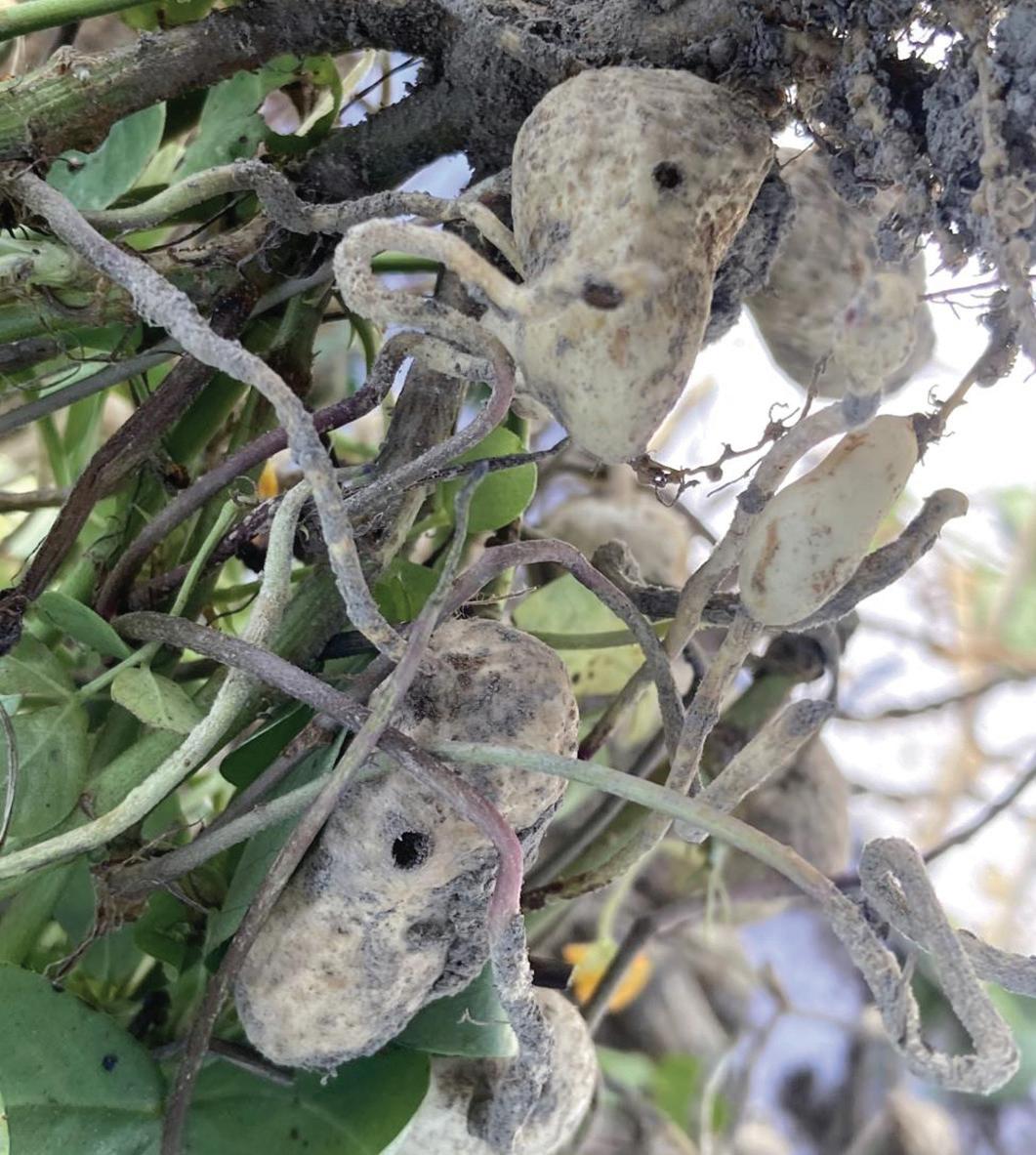
in our Virginia-market types, but we can run into issues if our plant stands are low. Our intensity of TSWV is lower than in Southeastern states but we can run into significant incidence of disease. Plant enough seed to get five plants per foot of row. This minimizes risk for TSWV and thrips.
The seed we plant is treated with fungicide and that allows us to get adequate stands. There is no substitute for an effective seed treatment. On the front end of establishing a peanut stand, it pays to inoculate peanuts for nitrogen fixation. Based on long-term data in North Carolina, the financial return on inoculation through in-furrow application is about 40 to 1 in new ground and 4 to 1 in rotated ground.
Taking care of problematic weeds, establishing an adequate stand, protecting peanuts from thrips injury during the first month of the season, ensuring biological nitrogen fixation and stacking things in your favor for insects that might be an issue later in the season are important to do prior to or during planting. Finally, nematodes can certainly be an issue. Hopefully you have information on risk of injury in all of your fields. Fumigation, in-furrow nematicide application and in-furrow insecticide treatments (aldicarb) have various levels of effectiveness against this pest. But the decision to manage this pest with these options occurs no later than planting.
There is a lot here to digest, but once we plant, much of our yield potential is set. We can make up some ground if our early season decisions and inputs are marginally effective, but the process is much more difficult, and it is really challenging and expensive to make up all of the difference.
22 / THE PEANUT GROWER • APRIL 2024 PEANUTGROWER.COM
DAVID JORDAN North Carolina State University Extension Agronomist
Southern corn rootworm damage.





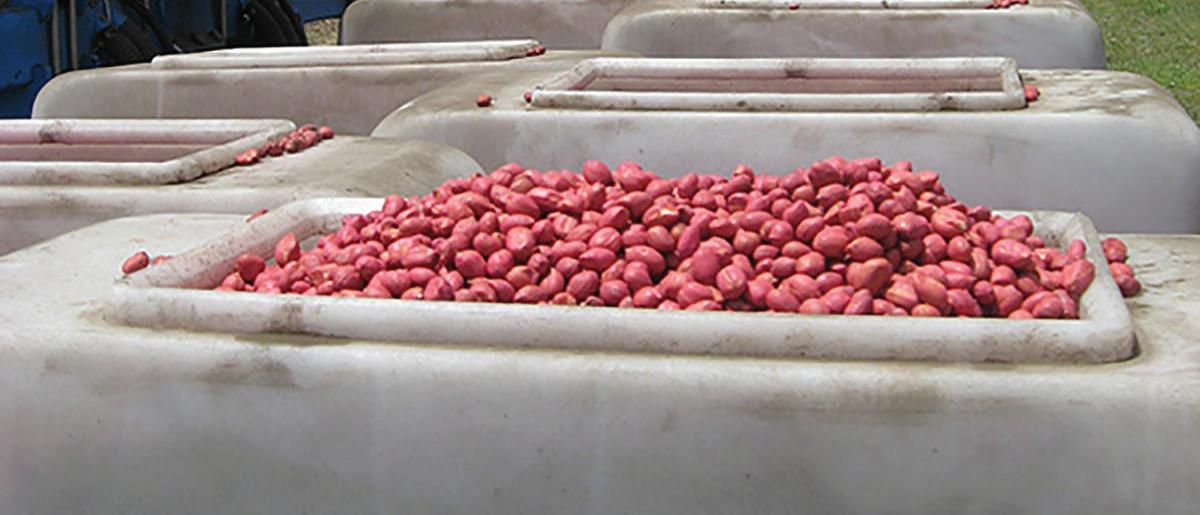









































We work hard at what we do because we know you work hard at what you do. Between our print and digital o erings, Peanut Grower is here for you year-round. www.peanutgrower.com@PeanutGrower PeanutGrower@ ePeanutGrower Don’t miss an issue! Scan the QR code with your phone to renew today for FREE!

















visjonbiologics.com 1092 S Graham ST | Henrietta, TX 76365 | (940) 264-0343 Exceed® SAR for Peanuts. MORE than just a seed inoculant. The EPA Registered SAR Component: • Provides protection against fungal infections such as dampingoff and white mold • Interrupts the life-cycle of the root-knot nematode
Elicits the plant enzymes for vitality •Elevates the innate immunity defense mechanism of the plant
Boosts germination and builds a stronger root system •Increases yield - trial results show an average increase of 434 pounds per acre To learn more, contact your local dealer today. EXCEED® SAR INOCULANT TRIALS - PEANUT +239 Lbs/A Above Competitor 5600 5700 5800 5900 6000 6100 6200 Yield (Lbs/A) Exceed SAR 6151 Competitor 5915 South Georgia2021 & 2022 (2-Year Average) +562 Lbs/A Above Control 4000 4200 4400 4600 4800 5000 5200 Yield (Lbs/A) Exceed SAR 5143 Competitor 2 4864 Control 4581 Competitor 1 5008 North Carolina2022 (1-Year Average) EXCEED® SAR INOCULANT TRIALS - PEANUT Exceed® SAR is guaranteed not to be harmful to costly seeds and is compatible with all seed treatments.
•
•






















 Amanda Huber Editor, e Peanut Grower
Amanda Huber Editor, e Peanut Grower
























































 EMI KIMURA Texas A&M AgriLife Extension State Extension Peanut Specialist
EMI KIMURA Texas A&M AgriLife Extension State Extension Peanut Specialist














































